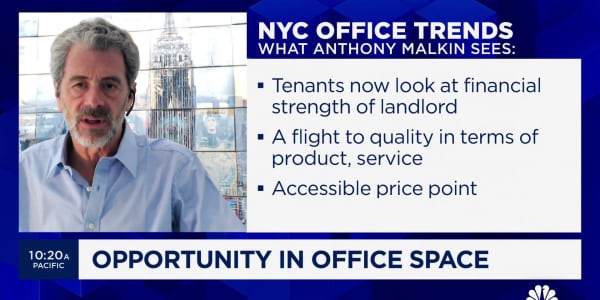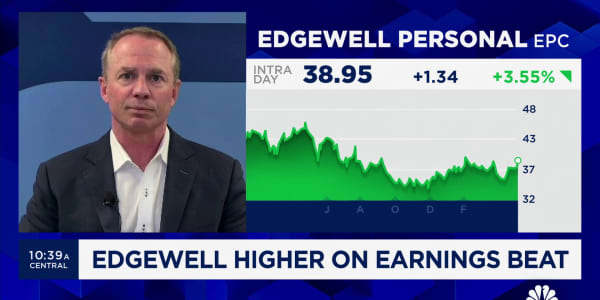When someone says "loans create deposits," usually that means at least that the marginal impact of new lending will be to create a new asset and a new liability for the banking system. But in our system it's actually a bit more complicated than that.
A bank makes a loan to a borrowing customer. This simultaneously, creates a credit and a liability for both the bank and the borrower. The borrower is credited with a deposit in his account and incurs a liability for the amount of the loan. The bank now has an asset equal to the amount of the loan and a liability equal to the deposit. All four of these accounting entries represent an increase in their respective categories: the bank's assets and liabilities have grown, and so has the borrower's.
It's worth noting that at least two more types of liabilities are also created at this moment: a reserve requirement is created and a capital requirement is created. These aren't standard financial liabilities. They are regulatory liabilities.
The reserve requirement arises with the creation of the deposit (the bank's liability), while the capital requirement arises with the creation of the loan (the bank's asset). So loans create capital requirements, deposits create reserve requirements.
(See also: What Really Constrains Bank Lending.)
Banks are required to have a 10 percent reserve for deposits. (For simplicity's sake we're going to ignore some technical aspects of reserve requirements that actually make this number smaller than 10 percent.) Which means that a bank incurs a reserve requirement of $10 for every $100 deposit it takes on. Since loans create deposits, a $100 loan gives rise to a $10 required reserve liability.
To be considered well-capitalized, a bank in the U.S. must currently have a 10 percent combined Tier One and Tier Two Capital ratio (we'll ignore the more complicated angles for capital requirements also). What this means is that the $100 bank loan gives rise to a regulatory capital liability of $10 of Tier One/Two Capital.
What this means is that the $100 loan that created a $100 deposit, actually created a $100 asset for the bank (the loan) and $120 of liabilities (the deposit plus the required reserves and capital). That might sound like a pretty bad deal for a bank. But it's not quite as bad as you might think.
Let's imagine a bank that is starting off from scratch. Scratch Bank lends $100 to Mr. Parker. It does this by crediting Mr. Parker's deposit account at Scratch Bank with $100. The bank must now immediately figure out how to meet its two new liabilities: its reserve requirement and its capital requirement.
To raise the $10 of required capital, Scratch Bank will have to sell shares, raise equity-like debt or retain earnings. Since Scratch Bank just got started, the only way to create immediate earnings would be to charge a ten percent origination fee to Mr. Parker. The last option isn't really as outlandish as it sounds (although 10 percent is way too high). Lots of loans come with versions of origination fees that can go to help banks settle their capital requirements. A $10 fee that is kept as retained earnings would completely satisfy the capital requirement.
This is actually quite extraordinary. The bank is meeting its capital requirement by discounting a deposit that it created out of its own loan. Which is to say, it is meeting the capital requirement with nothing other than its own money creation power. This makes sense because, as we will see in a moment, the effect of it is to reduce the liability of the bank without reducing its asset. What it really does is allow the bank to have an asset that is greater than the deposit liability it created.
Note that the way this would be done, in most circumstances, would be to net the $10 fee directly out of the $100. So the actual deposit would be just $90 dollars. The bank's reserve requirement would decrease by $1 dollar because of this accounting. Which means that the $100 loan really creates $119 of liabilities for the bank: a $9 reserve requirement plus a $10 capital requirement.
How can the bank meet the requirement for $9 of reserves? It could try to attract a new customer, let's call him Mr. Christie, who would deposit at least $10 dollars. This would create a liability for the bank of $10 as well as a cash balance (an asset) of $10. The bank would need to use $1 dollar of this as a reserve for Mr. Christie's account and could use the rest as the reserve for Mr. Parker's account. (There's no capital requirement for a cash asset, so the reserve requirement is the only one that applies.)
The bank could also borrow the reserves from another bank in what's known as Fed Funds market. This is the unsecured overnight lending market in which banks with excess reserves lend to banks with deficient reserves. Basically, instead of getting Mr. Christie to deposit $10 in Scratch Bank, Scratch Bank would borrow that deposit from Establishment Savings Bank instead. Right now the Federal Reserve targets the interest rate in this market as between 0 and 0.25 percent. In other words, acquiring the $9 of reserves is easy as pie.
Now here's what happens when Mr. Parker writes a check on his account to pay for a new window for his shop (it was broken by someone who wanted to stimulate the local economy, of course.) Scratch Bank will need to transfer $90 dollars to the window maker's bank through the payment system of the Federal Reserve. Scratch Bank, however, doesn't have anything like $90. All it has is $9 dollars in borrowed reserves plus $10 in retained earnings.
The bank can't use those $10 in retained earnings, however, because it needs them to meet its capital requirement. Even though the withdrawal of the $90 from the bank account extinguishes the need for a reserve requirement against the deposit, the loan still remains outstanding. Which, in turn, means the capital requirement remains in place.
So it needs to raise $81 from someone — more depositors, the interbank market, or perhaps money market funds willing to lend against some collateral. The only collateral it has is the loan to Parker, which is worth $100. After a haircut of a couple of points, however, raising $81 shouldn't be too much of a problem.
Note that the capital requirement has done its job, even though it was funded with bank created money. Because the bank effectively lent out only $90 dollars while creating a $100 loan, it is able to borrow on the collateralized market to fund its liability when the deposit created by the loan is drawn. It can borrow the $90 it needs to satisfy its reserve and withdrawal liability, take a pretty steep discount and still make a profit on the spread.
In other words, the effect of the origination fee is the same as if it actually raised outside capital. If instead of funding the loan with a fee, the bank met the capital requirement by sell $10 worth of equity, it would have had a $100 liability, a $100 asset, a $10 reserve requirement and a $10 capital requirement. When the money was withdrawn, it would owe $100 to the receiving bank. This could be paid with the $10 raised in equity, and $90 in borrowed funds. It doesn't really matter whether the capital requirement is met through outside capital, fee income or a combination of both (which is how it is done in real life).
Of course, for this to work, the market has to believe that the value of the loan to Mr. Parker is actually worth more than the $90. If counter-parties believe there is a significant chance that Mr. Parker will default on his loan, it could be worth less than $90. In that case, Scratch Bank would be forced to find other sources of funding — new investors, a government bailout—or default on its obligations to the window maker's bank.
But let's say it does work. What we have here is a functioning bank, a demonstration of how the basic infrastructure of banking is not built on a foundation of a bunch of cash that is then lent out. It's built on the loans themselves, with capital and reserves raised to meet regulatory requirements.
Follow me on Twitter @Carney






